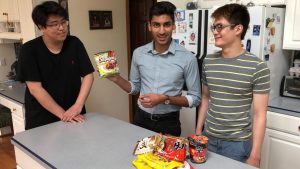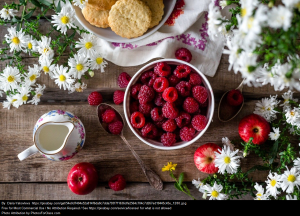A look into Japanese food and culture
For Nao Oya ’23, eating and making Japanese food helps her stay connected to her culture and her family.
November 18, 2020
While living in America, Nao Oya ’23 stays connected to her Japanese culture through making and eating different Japanese foods.
“We always eat a lot of Japanese food here in America. So that’s kind of how we stay connected but also like there are certain traditions in Japan that we do here,” Oya said.
Though there are many different foods to choose from, one especially sticks out as a favorite.
“This is basic, but I really like ramen,” she said, “I just feel like ramen here in America you know like cup ramen and stuff, it’s just like, definitely not as good.”
When you ask Americans about ramen, many will think of the 20 cent wavy noodles college students eat for dinner. However, in Japan, it has a different meaning.
“In Japan, the soup and noodles are better, also the presentation of the ramen is much more beautiful and appetizing,” Oya said.
Another favorite is okonomiyaki, a savory pancake that can be eaten for dinner or a snack. According to Oya, it is quite easy to make.
“If I was eating okonomiyaki, then I would make it. It is super easy to make and it only consists of a few things,” Oya said. “You can have it for dinner, it’s really good.”
To make okonomiyaki, you need flour, cabbage, eggs, okonomiyaki sauce, mayonnaise and toppings. You mix all the ingredients in a bowl and place it on a pan, similar to pancakes. Then you eat it with mayonnaise, okonomiyaki sauce and other toppings.
While not all foods are as easy to make as okonomiyaki, it’s a sacrifice Oya is willing to make in order to stay connected with her culture and her family.
“I think eating Japanese food every day really keeps [my family] connected,” Oya said. “It also makes me feel closer to my grandparents who live in Japan.”








